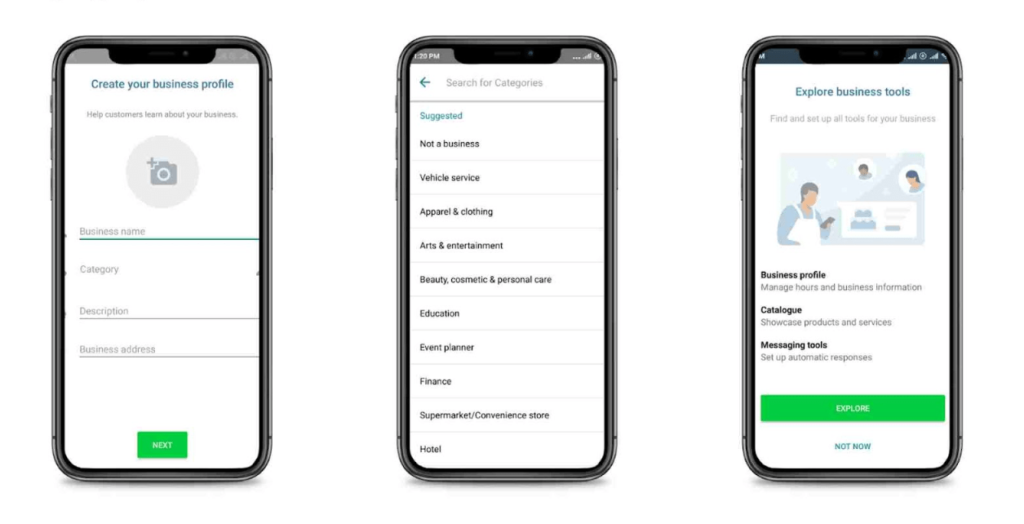One important yet reliable way to streamline orders is to set up the WhatsApp ordering system, especially for small and medium-sized businesses. With over 2 billion active users, WhatsApp provides a platform that allows businesses to reach customers and collect orders in a quick, easy, and natural way. This is a step-by-step guide to creating a robust WhatsApp ordering system for your company, including everything from setup to strategies to enhance customer service to increase demand.
Table of Contents
Why Pick WhatsApp for Ordering?

WhatsApp is more than just an educational software; it’s a tool that helps businesses attract customers directly. With its unavoidable use and simple interface, WhatsApp provides a reliable method for customers to place orders without having to visit a website or download an additional app. WhatsApp is excellent for businesses that:
Work primarily through online communication
Need a cost-effective way to manage orders?
It is necessary to create a more personalised, one-on-one relationship with customers.
You can swiftly receive, monitor, and fulfil orders using a WhatsApp ordering system. It is a versatile solution for retail stores, coffee shops, locally owned businesses, and other ventures where face-to-face communication with customers is essential.
Beginning: Set Up Your WhatsApp Business Account

To start using WhatsApp for orders, you need to create a WhatsApp Business account. WhatsApp Business can make use of and provide a few features specifically designed for business communication. Here’s how to get things going:
Install WhatsApp Business on your device after downloading it from the app store.
For independent individual and business correspondence, register your business phone number.
Add important details to your profile, such as your company name, logo, address, hours, website, and a brief summary of your contributions.
To invite new customers or inform them of your continued hours and contributions, set up automated communications.
Additionally, WhatsApp Business allows you to label your conversations with terms like “new order” or “order satisfied,” which makes it easy to keep track of each customer’s position within the ordering system.
Make an Order Layout for Simple Correspondence
To streamline the ordering process, it is beneficial to create a pre-structured order template. This ensures you receive all the important information in a single message and helps customers enter their orders clearly. This is an example of a café layout:
Test Order Format: “Hello, I recommend placing a purchase! My data is as follows:
Complete Name:
Order Things (incorporate amount):
Favored Pickup/Conveyance Time:
Address (for conveyance):
Installment Technique (Money/Card):”
Provide this format efficiently on your website, in virtual entertainment, or on your company WhatApp profile so that customers are aware of the nuances to include. If a customer messages you with an overall order, you may also build up a mechanised response that provides this structure.
Utilizing Lists to Feature Items
WhatsApp Business includes an Index that enables you to build a virtual customer-facing interface within the app. Using an inventory allows you to showcase your products or services with images, descriptions, and prices, making it simple for customers to browse and select anything on WhatApp. Here’s how to organise your inventory:
Go to Business Devices in WhatsApp Business, and select List.
Add details by moving photos, giving descriptions, and appreciating nuances.
If at all possible, arrange your products according to categories so that customers can more easily browse your contributions.
Because they give customers a visual preview of the products that are available, inventories are especially useful for food and beverage organisations, retail stores, and speciality co-ops.
Automate Order Confirmations and Updates
Consider using WhatsApp Business’ automated informing features to send order confirmations and updates in order to inform customers and reduce the need for this-and-that correspondence. For instance:
Order Got Message: Acknowledge the client’s structure and estimated handling time by sending an affirmation once an order is placed.
Order Announcement:When an order is ready, shipped, or ready for pickup, let customers know.
Follow-up Message:Once the order is complete, think about asking for feedback or sending a thank-you note.
Time is saved and customers are reassured that their purchases are being processed quickly when these responses are computerised.
Incorporate an Installment Framework
There are various methods to accept installments within WhatsApp, even though the program doesn’t have one built in:
Use an external service, such as PayPal, Stripe, or local installment providers, to send installment links.
Use QR codes if clients are paying in person or upon conveyance.
Cash on Delivery (COD) for clients who prefer paying once they receive their order.
Keep in mind installation nuances or instructions for your order confirmation letters to make things easier. To make it easy for customers to finish transactions, you could, for instance, send a safe installment link right after the order is confirmed.
Advance Your WhatsApp Ordering System
The next step after establishing your WhatsApp ordering system is to notify customers about it. Advertise your ordering channel on WhatsApp on many platforms:
Social Media: Post about your WhatsApp ordering option on platforms like Instagram, Facebook, and Twitter. Include a link to your WhatsAp or WhatsApp Business number in your profiles.
Website: Add an “Order via WhatsApp” button on your website to direct clients to WhatsAp with a single click.
In-store Signage: For organizations with a physical location, display signage encouraging clients to order through WhatsApp.
Email Campaigns: If you have a client email list, announce your WhatsApp ordering option in your next newsletter.
Customers will find it easier to connect with you and make orders as a result of increased awareness of your WhatsApp ordering system.
Track Orders and Client Information for Insights
Keeping an eye on customer preferences and order history is crucial to growing your company. You may label conversations with WhatsApp Business, which makes it simpler to arrange orders by client or status. Furthermore:
To keep track of each order’s progress, use chat labels like “New Order,” “In Progress,” and “Completed.”
To keep track of clients, export chats on a regular basis. This might assist you in identifying your best-selling items, busy ordering periods, and loyal customers.
Monitoring this information enables you to spot patterns, modify your stock, provide exclusive offers to devoted customers, and improve your overall level of service.
Provide Excellent Customer Service
An essential component of any ordering system is customer service. Since providing exceptional customer service can differentiate you from rivals, make sure your responses are timely, polite, and educational. Among the advice are:
Create short responses to quickly respond to frequently asked queries, like “What’s the flavour of the day?” or “When are you open?”
During business hours, promptly respond to orders and questions to ensure that customers feel heard and appreciated.
Send a follow-up message to clients who have placed large orders or deliveries that are delayed to let them know that their order is still being processed.
Providing exceptional customer service may convert a new consumer into a devoted customer, which is crucial for creating a long-lasting company.
Encourage Feedback and Reviews

Urge pleased customers to post reviews on your social media accounts or other websites that list your company. Good ratings enhance your brand and draw in new customers. Here are some strategies for promoting feedback:
After a successful order, thank the customer and ask them to submit a review by sending them a message.
Provide rewards to customers who write reviews, such as a discount on their subsequent orders.
Display customer testimonials on your social media networks and WhatsApp Business profile to foster trust. You may build more trust with customers and make your company seem reliable by aggressively collecting and sharing feedback.




